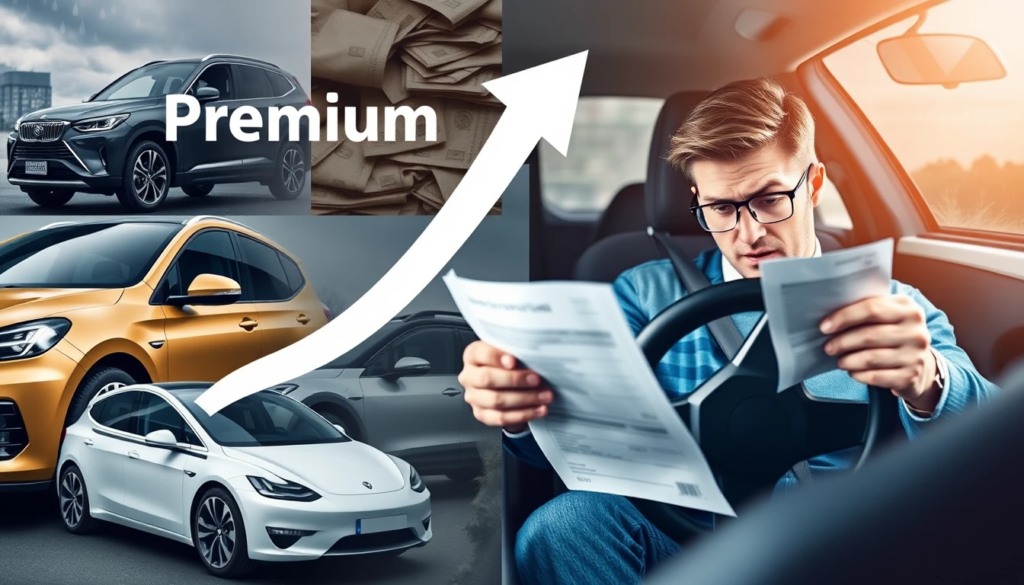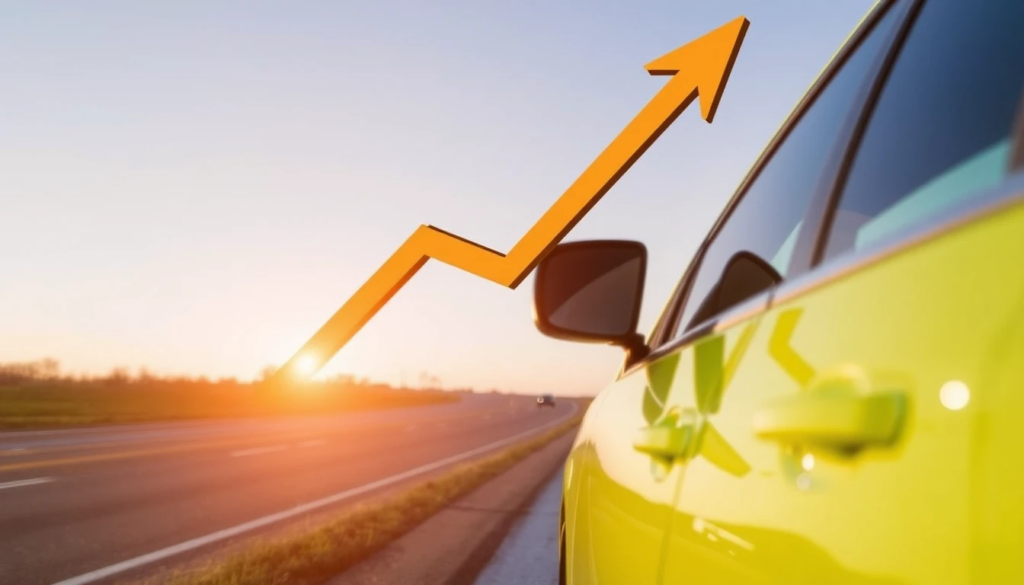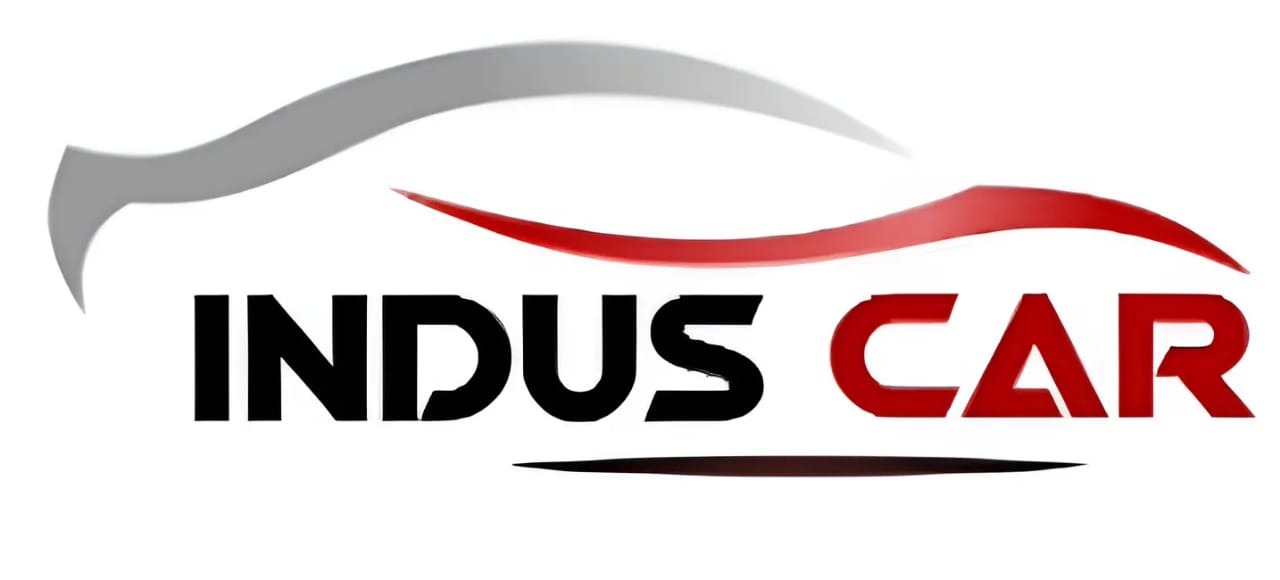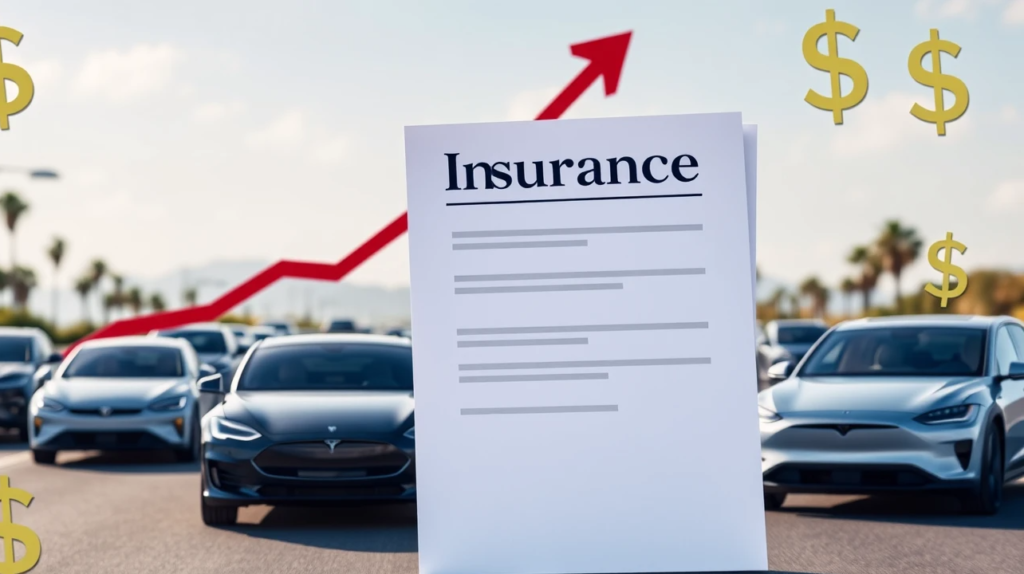Auto insurance premiums are on track to rise for the seventh consecutive year in 2025. However, the rate of increase is expected to slow down significantly compared to previous years. According to the State of Auto Insurance in 2025 report by ValuePenguin.com, insurance premiums are anticipated to rise by an average of 7.5% in 2025. While this represents a decrease from the steep 16.5% increase drivers faced in 2024, it still reflects the ongoing challenges within the auto insurance market.
This gradual deceleration in premium hikes offers a glimpse of relief to consumers who have faced significant financial strain due to rising costs in recent years. Despite this, the reality remains that the average cost for full coverage car insurance will hit a new high, projected at $2,101 annually. This figure marks a record for American drivers, further stretching household budgets already burdened by inflation and rising living costs.
Table of Contents

Regional Differences: Who Will Bear the Brunt of Rising Premiums?
While the overall national average reflects a moderation in premium hikes, certain regions of the United States will see far larger increases. Some states will feel the brunt of the rising costs more acutely than others, causing further financial hardship for local drivers. According to the report, drivers in New Jersey, Washington, and California are expected to experience the most significant increases, with premiums projected to rise by more than 15% in these states.
The reasons for these regional differences can be attributed to several factors, including state-specific regulations, higher rates of accidents and claims, and the costs associated with local repair shops and parts. In areas where traffic accidents are more frequent or where weather conditions exacerbate road hazards, insurance companies often adjust their premiums to account for the increased risk. Similarly, states like California, which have a high number of vehicles on the road and a greater frequency of natural disasters such as wildfires, can see insurance premiums spike as a result of increased claims.
As some states face these sharp increases, others will see insurance premiums in a much more manageable range. Despite this, the rising premiums continue to place a heavy financial burden on many Americans who may already be struggling with the cost of living. For instance, while the national average will hit $2,101, drivers in certain states will experience an even sharper rise in premiums, potentially pushing some into financial hardship.
The Most Expensive States for Auto Insurance
In the face of this nationwide premium increase, two states are set to surpass Michigan as the most expensive locations for auto insurance: Nevada and Florida. These states are projected to have average annual insurance costs of $3,216 and $3,264, respectively, far exceeding the national average.
Michigan, long regarded as one of the states with the highest car insurance premiums, will be surpassed by Nevada and Florida as the most expensive states for drivers. These increases can be attributed to a variety of factors, including the higher-than-average number of claims, repair costs, and traffic accidents in both Nevada and Florida.
In Nevada, a rapidly growing population and influx of new residents has placed a strain on both the infrastructure and the insurance market. This population boom, coupled with a large number of tourists, leads to an increase in the frequency of accidents, which in turn pushes insurance rates higher. Additionally, Nevada’s susceptibility to natural disasters such as wildfires and flooding increases the likelihood of damage to vehicles, further raising premiums.
In Florida, the situation is similar. With its extensive coastline, frequent storms, and dense population, the state has long seen higher-than-average insurance costs. Florida drivers also face an increased risk of vehicle theft, particularly in urban areas, which contributes to higher premiums for residents.
The Impact on Drivers with Traffic Violations
While all drivers will be impacted by the increase in insurance premiums, those with traffic violations are likely to face the steepest hikes. On average, premiums for drivers with a history of violations are expected to rise by a staggering 53%. However, drivers in North Carolina will face some of the harshest increases, with premiums for those with violations rising as much as 146% higher than base rates.
This substantial increase for drivers with a history of traffic violations can be attributed to the higher risk they present to insurance companies. A traffic violation history suggests a higher likelihood of future claims, prompting insurers to raise premiums for these drivers to offset the potential financial risk. The more severe the violation—such as a DUI or reckless driving—the greater the premium increase, as these violations are often associated with significantly higher accident rates.
Drivers who have committed traffic violations, particularly those involving alcohol or dangerous driving behaviors, can expect their premiums to rise substantially in the coming year. In some cases, this increase could push their annual insurance premiums well beyond what they were previously paying, creating additional financial strain for those who are already struggling to afford insurance.
The Growing Trend of Electric Vehicle (EV) Insurance
As electric vehicles (EVs) become increasingly popular, the cost of insuring them is showing signs of affordability. However, new electric vehicles are still projected to be 23% more expensive to insure than their gasoline-powered counterparts. This price gap reflects the higher initial cost of EVs, as well as the relatively higher cost of replacing damaged parts, which is more common with the newer technology and specialized components used in electric vehicles.
While insurance for EVs is becoming more accessible for consumers, some brands and models are still significantly more expensive to insure than others. For example, vehicles produced by legacy automakers like Ford and Volkswagen tend to have lower insurance premiums compared to those made by electric-only companies like Rivian and Tesla. Insurance premiums for EVs produced by these newer companies can be up to 25% higher than their legacy counterparts, which can make owning one of these vehicles more expensive for drivers.
Electric vehicles like the Rivian R1T and Tesla Cybertruck are among the costliest to insure. These models often have higher repair costs due to the specialized parts and technology used in their design, leading to higher premiums. As the EV market continues to grow and more models are introduced, it’s likely that the costs associated with insuring electric vehicles will continue to fluctuate. However, it’s also expected that over time, insurance premiums for EVs will begin to level off as more data becomes available on their safety and repair costs.
The Bigger Picture: Ongoing Challenges for Drivers
While the slower rate of increase in 2025 may offer some relief to consumers, the larger factors driving premium hikes remain largely unchanged. According to Divya Sangameshwar, an insurance expert at ValuePenguin.com, “Although rates are not expected to rise as dramatically in 2025 compared to 2024, auto insurance premiums will still be a financial burden for many consumers in the year ahead.”
The overall market conditions driving these premium hikes—such as rising repair costs, increased claims from traffic accidents, and the ever-present risk of natural disasters—are not expected to change anytime soon. Drivers will continue to face the challenges of rising premiums, even if the increases themselves are less severe.
Sangameshwar also pointed to potential risks that could make the situation worse in the coming years. One potential development is the introduction of tariffs on imported goods by President-elect Donald Trump. If these tariffs are implemented, the cost of imported car parts could rise significantly, leading to higher repair costs for vehicle owners. These higher repair costs could, in turn, lead to even greater rate hikes in 2026, as insurance companies seek to offset the increased risk.

Conclusion: Looking Ahead to 2025 and Beyond
While the slowing pace of premium increases in 2025 may offer some relief to drivers, the reality is that insurance premiums will remain high for many consumers. As drivers continue to face rising premiums, it’s important to be proactive about shopping for the best coverage and seeking discounts where possible. Whether it’s maintaining a clean driving record, bundling policies, or exploring options for insuring electric vehicles, drivers will need to be savvy and diligent to manage the rising cost of car insurance in the years ahead.
As the insurance landscape continues to evolve, drivers should also keep an eye on potential changes in the market, such as shifting regulations, evolving vehicle technology, and the ongoing economic factors that contribute to rising premiums. The road ahead may be challenging, but with careful planning and awareness, drivers can navigate the ever-changing world of auto insurance.
FAQs
1. Why are auto insurance premiums increasing in 2025?
Premiums are rising due to factors like increased repair costs, more traffic accidents, higher claims, and the impact of natural disasters. These challenges continue to drive the overall cost of insurance.
2. Which states will see the highest auto insurance premium hikes in 2025?
States like New Jersey, Washington, and California are expected to face premium increases exceeding 15% due to higher accident rates and local conditions like wildfires and frequent storms.
3. How do traffic violations affect auto insurance premiums?
Drivers with traffic violations are likely to see a sharp rise in premiums, with increases averaging 53%. In states like North Carolina, rates may rise as much as 146% for those with serious violations.
4. How does electric vehicle insurance compare to traditional vehicles?
New electric vehicles are generally 23% more expensive to insure than gas-powered cars, mainly due to their higher repair costs and specialized parts.
5. What can drivers do to manage rising auto insurance premiums in 2025?
Drivers should shop around for the best rates, maintain a clean driving record, consider bundling policies, and explore options like EV insurance discounts to reduce premium costs.



